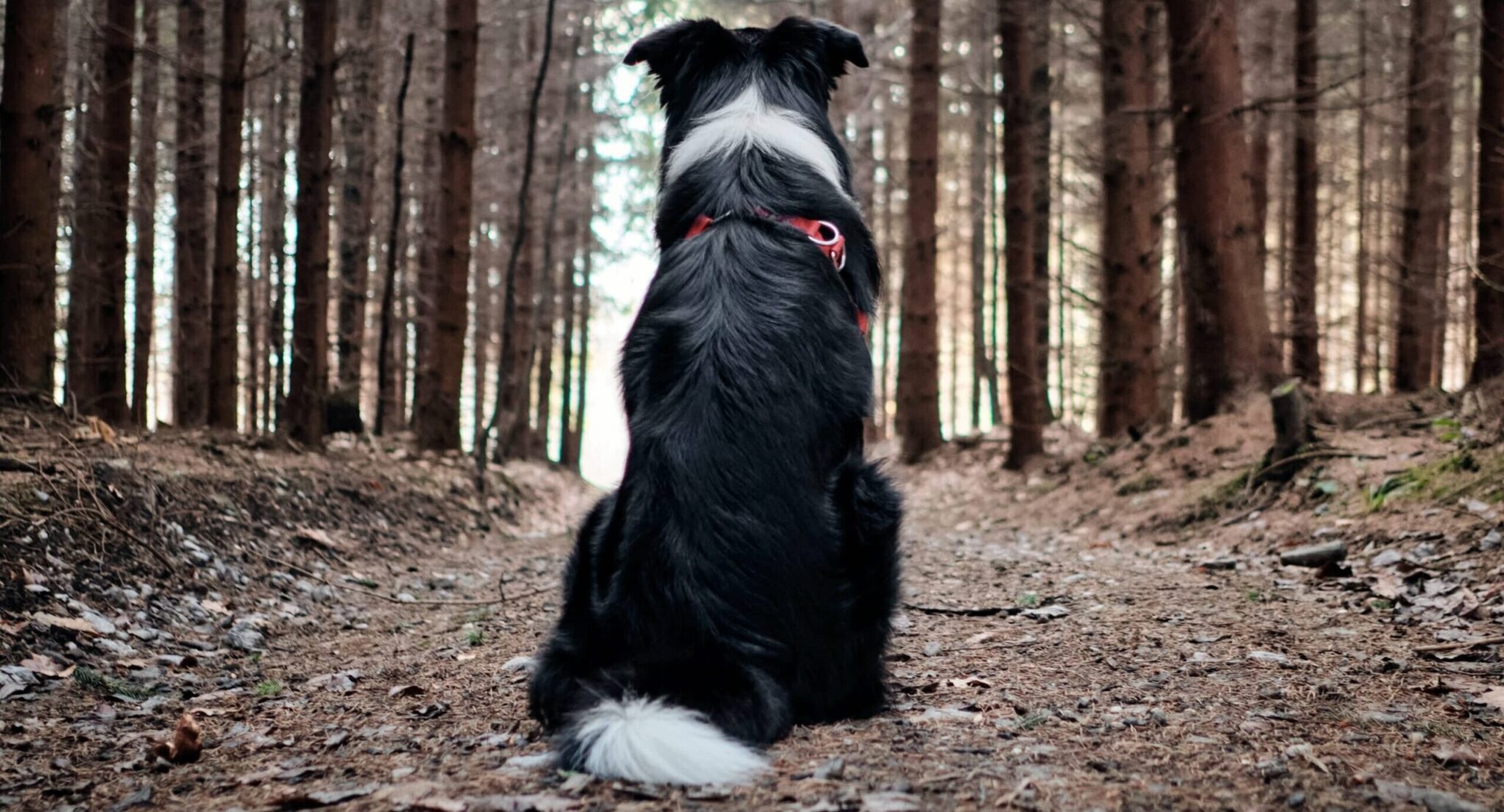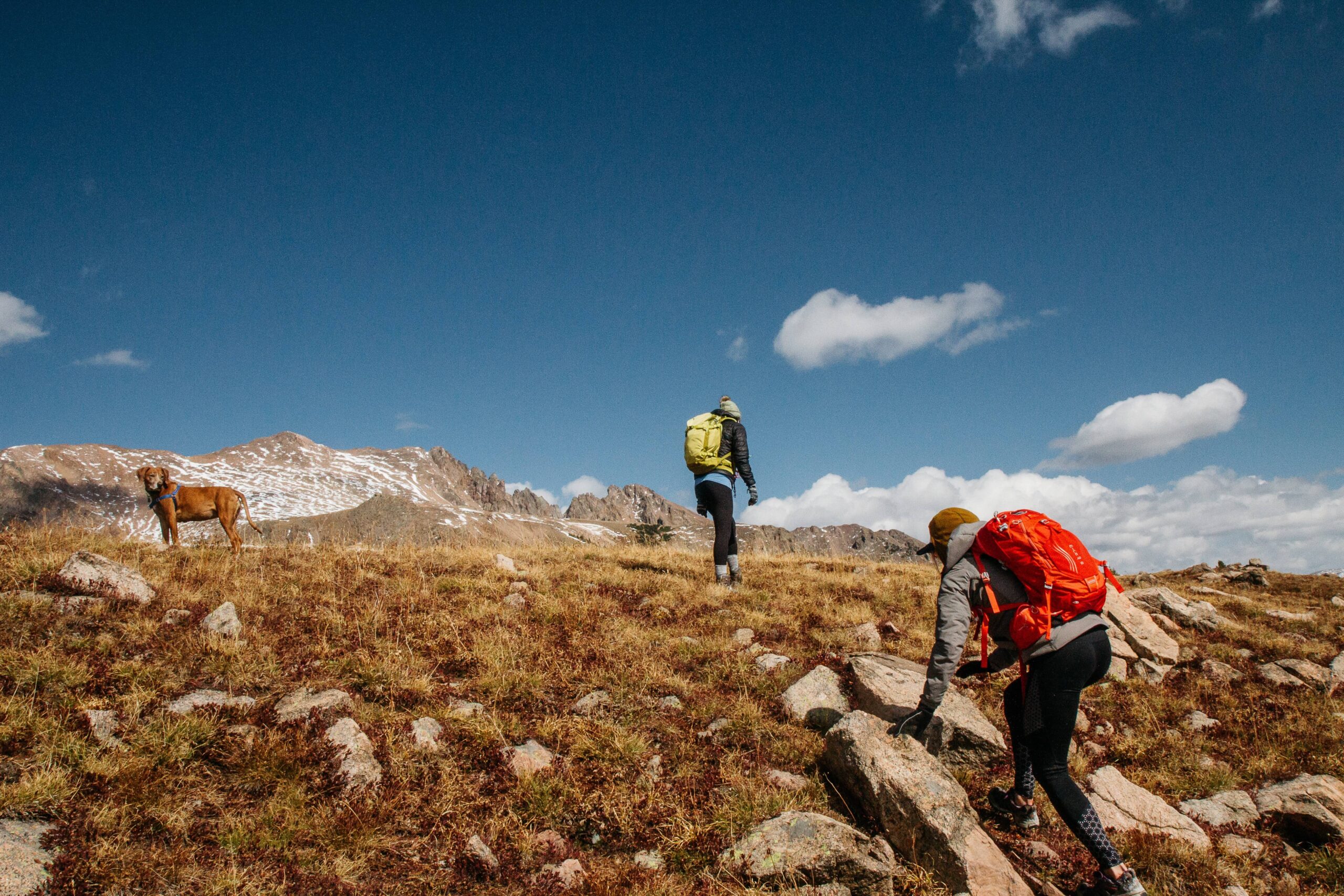Trails are the new frontier to our ever-changing urbanization. Communities are bringing nature closer with walking paths, gardens, and well-maintained hiking trails.
Anyone else have cabin fever? Bet your dog does, too. Outdoor exploration brings us a big dose of happiness! A good stretch of the legs can be a fulfilling exercise. Get off the beaten path and rediscover the outdoors.
Just like you’d prepare for a long walk or hike, you’ll want to do the same with your favorite pooch in mind. Here is a short list of the essentials when taking your tails to the trails.
Preparation Is Key To a Successful Trail Day

There are many dog friendly trails available. Find a trail to match the distance, terrain, and guidelines to keep you and your pup safe. Safety is a number one priority!
Be aware of your dog’s physical abilities. Puppies and older dogs may need more breaks. While adult and adolescent dogs will be hard-pressed to consider their own limitations. Keep everyone in check and gear up for your hike with these essentials.
Trail Essentials
- Insulated Water Jug
- Collapsible food/water bowl
- Kibble and treats like peanut butter bites, jerky, or biscuits
- Harness and leash
- ID tag
- Secure waste container
- Cooling vest
- First aid kit

1. Water – Beat The Heat With Hydration
Insulated water jugs keep water cold for hours.
Tough terrain, warm conditions and unexpected heat intensity can alter water consumption. It’s best to err on the side of caution and carry extra.
Your pup may prefer stream water, but we suggest clean water from home. Offer water frequently, even if your dog doesn’t always accept. A dry nose and a slowed pace may show a need for hydration.
On boiling days, turn your hot dog into a cool dog with a splash of water on their coat for added relief.
2. Food – Energize From The Inside Out
Try not to feed your dog too much immediately before or after a hike. Plan a full meal 1 hour prior and 30 minutes after trail time, but allow for snacks and treats along the way. When you stop for a snack, your pup could probably go for a bite, too.
A collapsible bowl saves space and provides storage. Your dog’s regular food schedule holds true while exploring, and hard kibble bites are easy to transport. Bring what you would expect, plus 50% more. Stopping for peanut butter bites, jerky, and an occasional biscuit gives your pup pep on their hike.
3. Harness and Leash – Providing Free Flowing Movement
A proper fitting harness can make all the difference. Simple guidelines are available online. A swimming dog will prefer a lighter harness which results in less water weight. Some dogs can handle a backpack harness depending on their level. Look for machine washability, for ease and improved hygiene.
Choose a leash no longer than 6 feet long. An option to consider is a hands-free waist leash. This provides a stable center of gravity, making you less likely to topple over. Front and back harness attachments make walking easier depending on your dog’s pace.
4. Identification – Safeguard Your Pet
Set your dog up for success! An I.D. tag can be your dog’s voice. Identification is a basic task, yet extremely important. Tags should be legible, durable and secure. LED tags are helpful during evening hours. A tag should include a cell phone number in case you are traveling. What about all that noise? Silicone material is silent and rattle free.
Microchips involve no moving parts and provide a true long-term sense of security. Don’t forget to register the chip with a national pet recovery database!
5. Secure Waste Container – Keep The Trail Clean and Your Life Pleasant
To bury or to carry? That is the question. The most respectful and ecological method of handling waste is to leave no trace. Bag waste with removal out of a wooded area is the preferred method.
A secure hard-sided waste container or odor-concealing bag is necessary. Add a dryer sheet to the waste container to suppress odor. Burying dog waste should only happen when removal from an area is not possible. Bury waste 8 inches underground, at least 200 feet from a trail or water source.
6. Dog Cooling Vest – For Those Dog Days of Summer
An evaporative vest works best for long hikes near water. You can rewet the vest and quickly be on your way. No inserts needed for this style. Simply submerge in water and configure it to your dog’s shape. We recommend rewetting every hour.
A Chill pack vest works best for shorter trails when sunlight will be abundant. This style is similar, but with the use of cold packs. Chill packs are a 1 time use.
7. First Aid Kit – Safe Preparation For A Happy Day
A first aid kit will provide a welcomed stress-buster to your adventure. The American Red Cross provides first aid training online. Feel confident knowing you have the tools to tackle any situation. First aid kits for pets are readily available online or at many pet supply stores.
Nobody wants to bring extra critters back from a fun-filled day. Flea and tick protection is a necessary part of trail preparation. Seek advice from your veterinarian to control these pesky insects.
Your dog will feel right at home plowing through the dirt, allowing the freedom of nature to race by. Trails are vast yet still provide a welcomed opportunity for closeness. Time spent together outdoors is a trust building exchange. Enter your adventure honoring the rules of the trail. Leave behind only paw prints and exit with a renewed step toward an unbreakable bond.
Now find that perfect trail and explore!
